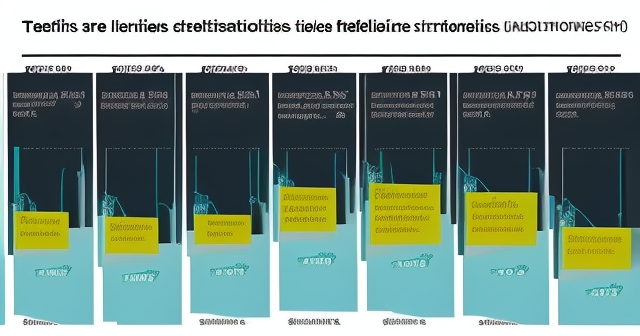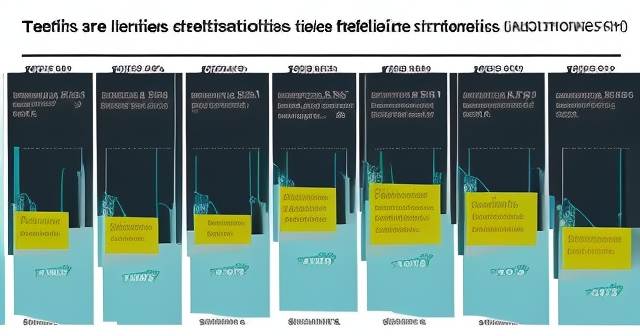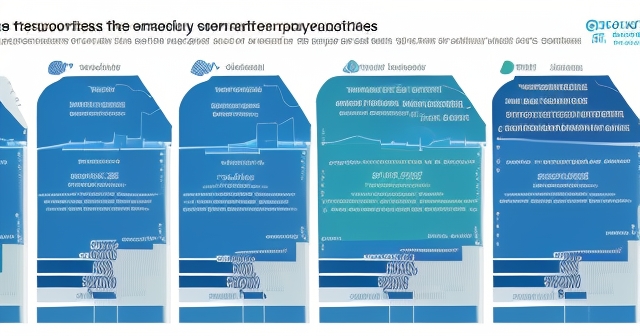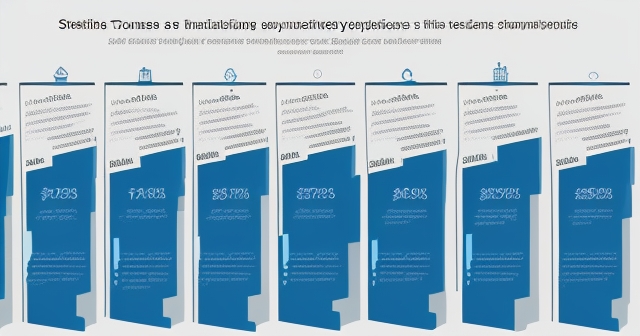
Tech Layoffs Chart: Understanding the Shift from Hiring to Workforce Reductions
Table of Contents
ToggleDecoding the Tech Layoff Wave: Trends, Triggers, and What the Data Shows
The technology sector, long seen as an engine of seemingly endless growth and expansion, has entered a period of significant recalibration. Beginning in 2022 and continuing through 2025, we have witnessed a dramatic shift from aggressive hiring to widespread workforce reductions. If you’ve been following financial news or observing the job market, you’ve likely encountered headlines about major tech companies and startups announcing layoffs. This isn’t just isolated news; it represents a substantial trend with deep roots and complex drivers. Understanding this phenomenon requires looking closely at the data, analyzing the reasons behind the cuts, and considering what it means for the industry and the broader economy. We’re here to help you navigate this intricate landscape, examining the patterns revealed in the multitude of tech layoffs chart visualizations you might encounter.
For investors and traders, particularly those interested in the tech sector, comprehending the scale and nature of these layoffs is crucial. It offers insights into company health, strategic direction, market sentiment, and potential shifts in technological priorities. While it may seem like a daunting topic, breaking down the data makes the picture clearer. Let’s delve into the numbers that define this current era of tech workforce contraction.

Key insights into the ongoing tech layoffs include:
- Significant increase in layoffs globally since 2022.
- Majority of affected workers are from the U.S. tech sector.
- Persistent trends indicate ongoing workforce adjustments through 2025.
The Seismic Shift: Quantifying the Scale of Tech Layoffs (2022-2025)
To truly grasp the magnitude of the changes happening in the tech industry, we must look at the raw numbers. The scale of layoffs since 2022 is unprecedented in recent history, especially when compared to the consistent growth witnessed in the preceding decade. Following a rapid expansion phase fueled partly by the unique demands and opportunities presented by the COVID-19 pandemic, companies hired at breakneck speed. This period of overhiring created conditions ripe for correction when the economic environment began to shift.
Looking at the aggregate data from various trackers, we see a stark picture. In 2022, the initial wave of layoffs began, impacting tens of thousands of employees globally. This was largely seen as a course correction for companies that had potentially overextended during the pandemic boom. However, 2023 marked a significant escalation. Data indicates that over 429,000 tech employees globally were laid off throughout that year. This wasn’t limited to one region; the impact was felt worldwide, though U.S.-based companies and employees bore a substantial portion, with over 191,000 U.S.-based tech workers affected.

The trend did not subside as 2024 arrived. While the initial shock might have passed, workforce reductions continued at a high pace. Throughout 2024, data points to over 165,000 global tech layoffs, with over 95,000 of these being U.S.-based positions. These numbers demonstrate that layoffs are not a fleeting event but a sustained pattern. And as we move into 2025, the trend persists. Early months of 2025, particularly January, February, March, and April, have continued to see significant layoff announcements. February 2025, in fact, registered one of the highest monthly layoff counts within this recent period, underscoring the ongoing nature of the contractions. Tracking these numbers on a tech layoffs chart reveals the peaks and valleys, but the overall volume remains remarkably high compared to pre-2022 levels.
These figures represent not just statistics but real people and significant shifts within numerous organizations. When we discuss workforce reduction in the tech sector, we are talking about hundreds of thousands of individuals impacted across various roles and seniority levels. The sheer volume underscores that this is a fundamental restructuring happening across the industry.
| Year | Global Tech Layoffs | U.S.-Based Tech Layoffs |
|---|---|---|
| 2022 | Tens of thousands | Not specified |
| 2023 | 429,000+ | 191,000+ |
| 2024 | 165,000+ | 95,000+ |
Reading the Charts: Annual and Monthly Trends in Layoff Data
Analyzing a tech layoffs chart can provide valuable insights into the rhythm and intensity of these workforce reductions. These charts, often presented by data aggregators and financial news outlets, typically plot the cumulative or monthly number of layoffs over time. What do these visualizations tell us?
Firstly, they clearly illustrate the surge that began in late 2022, accelerating dramatically into 2023. The charts show a steep incline in the cumulative number of layoffs throughout 2023, marking it as the peak year in terms of sheer volume during this current cycle. You might see a chart showing monthly layoff counts; this would highlight the specific months with the largest announcements. For example, certain months in early 2023 and again in early 2025 stand out as periods of particularly intense activity.
Comparing annual totals on a tech layoffs chart visually emphasizes the scale. While 2024 saw fewer total layoffs than 2023, the number remained substantial, indicating the trend wasn’t over. The continued significant numbers in early 2025 further reinforce this point. These charts help us move beyond individual company announcements to see the broader, systemic pattern. They aggregate data from hundreds, sometimes thousands, of tech companies, from the smallest startups to the largest corporations, providing a panoramic view of the industry’s health.

Furthermore, some detailed layoff trackers might offer filters allowing you to view data by region, industry sub-sector (like SaaS, hardware, fintech, crypto), or even company size. This granularity is invaluable. A tech layoffs chart filtered for “Big Tech” might show peaks tied to specific, large-scale restructuring announcements from giants like Alphabet (Google), Microsoft, Meta (Facebook), Amazon, or Intel. Conversely, filtering for “Startups” might reveal a more consistent, albeit lower-volume, stream of layoffs, reflecting the ongoing challenges in the venture funding environment that we will discuss shortly. Understanding how to read these charts and what different data visualizations emphasize is a critical skill for anyone trying to make sense of the current tech landscape.
The persistence of high numbers in 2024 and 2025 on a tech layoffs chart confirms that the underlying pressures causing these reductions are not fully resolved. While the initial “pandemic correction” might be largely complete for some firms, other factors continue to drive strategic and operational changes leading to job cuts.
Beyond the Hype: Core Drivers Behind the Workforce Contraction
Understanding the ‘why’ behind the numbers on a tech layoffs chart is essential. It’s not a single cause but a confluence of factors creating this widespread workforce contraction. One primary driver frequently cited is the correction from the rapid hiring spree that occurred during the height of the COVID-19 pandemic. As remote work became standard and digital transformation accelerated, many tech companies scaled their teams rapidly, anticipating sustained, elevated growth. This led to a degree of overhiring, where companies built capacity for a level of demand that proved unsustainable once the world began to normalize and economic conditions shifted.
Simultaneously, broader macroeconomic conditions began to deteriorate. Rising inflation prompted central banks globally to increase interest rates. Higher interest rates increase the cost of capital, making it more expensive for companies to borrow money for expansion and investment. They also tend to dampen consumer spending and business investment, leading to slower revenue growth for many companies, including those in the tech sector. Fears of a potential recession, or at least a significant economic slowdown, prompted companies to become more cautious. In response, many firms prioritized profitability and efficiency over aggressive growth, leading to significant cost-cutting measures, with workforce reductions often being the most substantial line item to address.

Companies like Wayfair, for instance, explicitly cited restructuring and optimizing their cost structure in alignment with market conditions when announcing layoffs. This strategic pivot towards efficiency is a common theme. The shift from a growth-at-all-costs mindset, prevalent during periods of cheap capital and high demand, to a focus on profitability and sustainable business models is a major force driving layoffs across the industry.
So, you see, while the post-COVID correction initiated the wave, the ongoing layoffs are deeply intertwined with global economic shifts and a fundamental reassessment of growth strategies within the tech sector. It’s a complex interplay of internal company decisions and external market forces.
The Venture Funding Squeeze: How Capital Markets Impact Startup Headcounts
While Big Tech layoffs often grab headlines due to the sheer number of employees involved, the data visible on a tech layoff tracker also highlights significant and persistent cuts within the startup ecosystem. This segment of the industry faces unique pressures, primarily stemming from a dramatic change in the venture funding landscape.
Following the peak of venture capital investment in 2021, funding began to decline sharply in 2022 and continued to decrease significantly in 2023 and 2024. Higher interest rates and economic uncertainty made investors more risk-averse. Valuations for startups dropped, and the pace of funding rounds slowed considerably. For startups that rely heavily on external investment to fuel their growth and often operate at a loss, this drying up of capital is an existential threat. They can no longer easily raise money at high valuations to cover operating expenses and ambitious expansion plans.
In this environment, startups are forced to prioritize cash preservation. This means drastic cost reductions, and unfortunately, the largest cost for most tech companies is personnel. As a result, layoffs have become a common strategy for startups to extend their runway (the amount of time they can operate before running out of cash), giving them more time to either reach profitability or weather the difficult funding climate. Companies like Stripe, despite being large and successful, still operate within a funding ecosystem framework and made significant cuts. Smaller startups across various sectors, such as Copia Global in e-commerce or ANS Commerce, have even faced shutdowns or liquidation due to the inability to raise necessary funds, leading to complete workforce dissolution.
Analyzing a tech layoffs chart that specifically segments data by company size would clearly show how the pattern of layoffs in startups differs from that in Big Tech. While Big Tech might have large, infrequent layoff events tied to major restructuring, startups exhibit a more continuous stream of smaller-scale cuts, reflecting the ongoing struggle to secure funding and achieve sustainable business models in a tougher market.
This venture funding squeeze is a critical, distinct driver of tech layoffs, particularly impacting innovation pipelines and the dynamism of the startup ecosystem. It represents a necessary but painful adjustment after a period of historically low interest rates and abundant capital flow.
Strategic Realignments: Restructuring, AI Focus, and Business Model Shifts
Beyond macroeconomic pressures and funding challenges, many tech layoffs are a result of deliberate strategic decisions by companies to realign their focus, improve efficiency, or adapt to evolving market demands. This often involves restructuring specific divisions, shifting priorities, or even changing core business models.
Restructuring is a frequent justification for workforce reductions. Companies might consolidate teams, eliminate redundant roles created through acquisitions (though this was less common a driver in this wave than others), or flatten management structures. Companies like Wayfair, mentioned earlier, explicitly underwent significant restructuring impacting thousands of employees. Hewlett Packard Enterprise (HPE) announced job cuts as part of a cost-optimization plan linked to its financial performance and share price. Block (formerly Square) also cited efficiency improvements as a reason for layoffs. These are not simply reactions to a downturn but proactive steps to streamline operations and improve profitability.
A more recent and increasingly significant driver is the industry’s intense focus on Artificial Intelligence (AI). While AI is creating new roles, it’s also leading to strategic shifts that can make existing roles or teams redundant. Some companies are reallocating resources towards AI initiatives, which might involve reducing investment in other areas and thus laying off employees from those less prioritized divisions. For example, Five9, a cloud contact center software provider, announced layoffs as part of a restructuring to prioritize its AI roadmap. Canva, the design software company, and D-ID, an AI video tech company, also cited strategic shifts towards AI as a factor in their workforce adjustments.
Furthermore, some companies are altering their fundamental business models, which necessitates changes in their workforce structure. Revel, a mobility platform, shifted from an employee model to a contractor model for certain roles, leading to layoffs of those employees. These strategic business model pivots, while potentially beneficial for the company’s long-term viability, can result in immediate job losses for those whose roles no longer fit the new structure.
These examples illustrate that tech layoffs are not always a sign of a company in distress. Sometimes, they are part of a planned transformation aimed at future growth or improved financial health. Analyzing company announcements alongside the data on a tech layoffs chart helps distinguish between cuts driven by distress versus those driven by strategic evolution.
Layoffs Across the Spectrum: Examining Cuts in Big Tech vs. Startups
The tech layoff wave has not spared any part of the industry. From the largest, most profitable corporations to the smallest, venture-backed startups, workforce reductions have been widespread. However, the patterns and reasons often differ between these two ends of the spectrum.
Big Tech companies – giants like Alphabet (Google), Microsoft, Meta (Facebook), Amazon, Intel, and Cisco – have announced tens of thousands of layoffs collectively. These companies, despite generating billions in revenue, engaged in significant hiring during the pandemic. Their layoffs are often described as corrections for this overhiring and strategic adjustments. For example, Google and Microsoft have stated they are realigning resources towards key priorities, including AI. Meta underwent extensive restructuring and cost-cutting efforts under its “Year of Efficiency.” Amazon adjusted its workforce across various divisions, from e-commerce fulfillment to corporate roles. Intel, facing challenges in the chip market, also announced significant job cuts as part of cost-saving measures.

While the total number of layoffs from Big Tech is massive, these cuts often represent a smaller percentage of their overall vast workforces compared to startups. For instance, laying off 10,000 employees from a company with over 100,000 still leaves a very large team, whereas a layoff of 100 employees from a startup of 200 is a 50% reduction, fundamentally altering the company’s capacity.
Startups, as discussed, face the primary pressure of the difficult funding environment. Their layoffs are often necessary for survival, aimed at preserving cash and extending their runway. These cuts can be proportionally much deeper than those in Big Tech. A small startup might lay off 30%, 50%, or even its entire workforce if it cannot raise the next funding round. Examples like Copia Global’s shutdown illustrate this extreme end. Even relatively successful startups like Stripe or companies planning IPOs like Turo have announced layoffs to ensure financial discipline and preparedness for market conditions.
Viewing a tech layoffs chart segmented by company size effectively visualizes this difference. Big Tech contributions often appear as large, infrequent spikes, while the startup segment shows a more constant, lower-level drip of smaller cuts, collectively adding up to a substantial number over time. Understanding these distinct patterns helps to analyze the health and challenges specific to different segments of the tech ecosystem.
| Company Type | Layoff Impact | Typical Layoff Size |
|---|---|---|
| Big Tech | Massive, strategic restructuring | 10,000+ employees (varies) |
| Startups | Proportional, survival-focused | 30%-50% of workforce or more |
Sector-Specific Stress: Impacts on EV, Fintech, EdTech, and Other Verticals
The tech industry is incredibly diverse, encompassing everything from massive cloud infrastructure providers and social media platforms to niche software companies and hardware manufacturers. While the overall trend of layoffs is widespread, certain sectors within tech have experienced particular stress or unique drivers for workforce reductions.
The Electric Vehicle (EV) sector, which saw massive investment and growth enthusiasm, has faced challenges leading to layoffs. Companies like Rivian and General Motors (GM) have announced job cuts in their EV divisions or related operations, citing production adjustments, slowing demand growth compared to previous projections, or strategic realignments. Tesla, the market leader, also underwent workforce reductions as part of efficiency drives.
Fintech (Financial Technology), another sector that experienced explosive growth and significant funding, has also seen substantial layoffs. As funding tightened and macroeconomic conditions impacted financial services, companies in payments, lending, and wealth management tech faced pressure. Stripe, PayPal, Block, and various smaller fintech startups have all announced job cuts. Regulatory issues can also impact fintech; Paytm in India faced significant layoffs following regulatory restrictions from the Reserve Bank of India (RBI) on its payments bank operations.

The EdTech (Education Technology) sector, which boomed during remote learning mandates, has contracted as students returned to physical classrooms and funding priorities shifted. Companies like Chegg and Byju’s (in India) have announced multiple rounds of layoffs as they adjust to post-pandemic realities and business model challenges.
Beyond these, sectors like e-commerce (Wayfair, GrubHub), cloud computing (Microsoft, Google, HPE), software (SAP, Dell, Autodesk), and digital media (Dotdash Meredith) have all contributed to the overall tech layoff numbers, each facing their own specific market dynamics, competitive pressures, and strategic imperatives driving reductions.
Examining layoff data through a sector-specific tech layoffs chart provides a granular view, revealing which areas of the tech economy are under the most pressure and helping to understand the unique challenges faced by companies operating within those verticals. This level of detail is invaluable for investors trying to assess risk and opportunity in specific tech market segments.
Global Forces at Play: Geopolitical and Regulatory Influences on Layoffs
While macroeconomic conditions, funding availability, and internal strategic decisions are major drivers, external factors like geopolitical tensions and regulatory actions can also trigger significant workforce reductions in specific circumstances. These instances, though perhaps less frequent contributors to the aggregate numbers on a tech layoffs chart, highlight the complex environment in which global tech companies operate.
Geopolitical tensions can impact international business operations, leading to layoffs in affected regions or partnerships. For example, reports have indicated workforce adjustments related to shifts in relationships between global tech giants and their operations or partners in countries affected by trade tensions or political disagreements. Microsoft’s relationship with its Chinese partner Wicresoft, leading to potential impacts on employee numbers, is one such example where geopolitical factors intersect with workforce decisions, albeit sometimes indirectly.
Regulatory actions by governments and financial authorities can have swift and drastic consequences for companies. The case of Paytm Payments Bank in India is a prime example. Following regulatory restrictions imposed by the Reserve Bank of India (RBI) due to supervisory concerns, Paytm’s business model was severely impacted, leading to significant layoffs as the company had to scale back or alter its operations in affected areas. This wasn’t a layoff driven by a general market downturn or funding issue, but directly by a specific regulatory intervention.
While these are not the primary drivers for the *majority* of tech layoffs seen on the global tech layoffs chart since 2022, they serve as important reminders that the tech industry is susceptible to non-market-based external shocks. For companies operating internationally, navigating diverse and sometimes unpredictable regulatory and political landscapes is a significant challenge that can directly impact staffing levels in affected regions or business units.
Understanding these external pressures provides a more complete picture of the forces shaping the tech workforce and adds another layer of complexity to the analysis of tech layoff trends.
The Human Aspect: Understanding the Impact on the Tech Workforce
Behind every data point on a tech layoffs chart are individuals, teams, and families affected by job loss. While we focus on market trends and strategic analysis, it’s crucial to acknowledge the significant human impact of this wave of workforce reductions. Mass layoffs create uncertainty, financial strain, and emotional distress for those directly affected. They can also impact the morale and productivity of remaining employees, who may feel insecure about their own positions or burdened by increased workloads.
For a sector that has long been associated with high-paying jobs, generous perks, and a seemingly endless demand for talent, this period represents a stark reality check. Many employees joined tech companies with expectations of stability and continuous career progression, which have been challenged by the suddenness and scale of these cuts. Navigating the job market after being laid off can be difficult, particularly as many companies are simultaneously slowing hiring or implementing freezes.
Furthermore, the widespread nature of the layoffs means that professionals across all roles – engineering, product management, sales, marketing, human resources, operations – have been impacted. This challenges the narrative that only certain ‘non-technical’ roles are vulnerable during downturns; the data shows cuts across the board as companies optimize for efficiency in every function.
While it is challenging to quantify the full human cost in a financial analysis, recognizing it is important for a complete understanding of the current tech landscape. The psychological and economic ripple effects extend beyond the immediate numbers captured on a tech layoff tracker.
Navigating the New Landscape: In-Demand Skills and the Evolving Job Market
Despite the significant number of tech layoffs, the job market within the industry isn’t uniformly bleak. The period of contraction is also a period of reallocation of talent and shifting demand for specific skills. While some roles are being reduced, others remain highly sought after, reflecting the industry’s evolving strategic priorities.
Analyzing job postings and market reports alongside the tech layoffs chart reveals interesting dynamics. For instance, certain specialized areas continue to see robust demand. Cybersecurity professionals remain in high demand as companies prioritize protecting their digital assets in an increasingly complex threat landscape. Cloud computing expertise is still critical as companies continue to migrate and manage infrastructure on platforms like AWS, Azure, and Google Cloud. And, perhaps most notably given the strategic shifts we discussed, skills related to Artificial Intelligence (AI) and Machine Learning (ML) are experiencing surging demand.
Companies are actively hiring for roles in AI research, ML engineering, data science, and related fields as they race to develop and integrate AI capabilities. While AI adoption might lead to some roles being automated or restructured, it is simultaneously creating a significant number of new, highly specialized positions. This bifurcation means that while the overall number of jobs might be down, opportunities exist for professionals with the right, in-demand skill sets.
The tech job market is recalibrating, shifting from broadly hiring across all functions during the boom to a more targeted approach focused on critical infrastructure, security, and future growth areas like AI. For tech professionals, this means continuous learning and adaptation are more important than ever to remain competitive in a tighter job market.
What’s Next: Looking Ahead at the Future of Tech Workforce
The tech layoff wave, clearly documented by the collective data presented in numerous tech layoffs charts and trackers, represents more than just a temporary downturn; it signifies a potential structural shift in how the industry operates and grows. What might this mean for the future?
Firstly, we may see a more disciplined approach to hiring across the board. Companies that experienced the pain and cost of mass layoffs are likely to be more cautious in future hiring cycles, emphasizing efficiency and measured growth over rapid expansion. The era of hiring simply to capture market share or utilize cheap capital may be replaced by a greater focus on hiring tied directly to revenue generation and profitability.
Secondly, the strategic pivot towards AI is likely to continue reshaping the workforce. We can anticipate further restructuring as companies integrate AI tools and redefine workflows. This will continue to create demand for AI specialists while potentially reducing roles focused on more routine or automatable tasks. The long-term net effect on total tech employment is still uncertain and will depend on the pace of AI adoption and the creation of entirely new roles and industries enabled by AI.
Thirdly, the venture funding environment will remain a critical factor, especially for startups. While there are signs of stabilization, a return to the funding levels and valuations of 2021 seems unlikely in the near term. This will continue to put pressure on venture-backed companies to manage costs tightly and demonstrate a clear path to profitability, influencing hiring and layoff decisions.
Finally, the experience of mass layoffs might also lead to shifts in employee expectations and the employer-employee relationship in tech. The perception of guaranteed job security has been shaken, potentially leading to different priorities for tech workers and impacting factors like compensation structures and the appeal of working at different company stages (startup vs. established).
While the peak volume of layoffs seen in 2023 might not be surpassed in the immediate future, the ongoing cuts in 2024 and 2025 suggest that the industry is still adapting to a changed economic and technological landscape. The data on the tech layoffs chart will continue to be a crucial indicator of the industry’s health and strategic direction in the years to come.
Conclusion: Navigating the Recalibration of the Tech Industry
The wave of tech layoffs since 2022 marks a significant recalibration of an industry that experienced a period of hyper-growth. As we’ve explored, the numbers are substantial, impacting hundreds of thousands of employees globally. Analyzing the data, particularly through the lens of a tech layoffs chart, helps us visualize the scale and timing of these contractions.
The drivers are multi-faceted: a necessary correction from pandemic-fueled overhiring, the impact of macroeconomic headwinds and rising interest rates, a significantly tougher venture funding environment for startups, and strategic shifts within companies, including a major pivot towards Artificial Intelligence and a renewed focus on efficiency and profitability. These factors have combined to create a challenging period for many tech companies and their workforces.
The impact varies across the spectrum, with Big Tech navigating large-scale restructuring while startups fight for survival in a cash-constrained environment. Specific sectors like EV, Fintech, and EdTech have faced unique pressures. External factors like regulations and geopolitics also play a role in specific cases. While the human cost is significant, the market is also seeing a reallocation of talent, with demand remaining strong for specialized skills, particularly in areas like AI and cybersecurity.
As investors and observers, understanding these dynamics is key. The tech layoffs chart is more than just a historical record; it’s a reflection of fundamental shifts in strategy, market conditions, and the underlying economics of the technology business. The industry is adapting, becoming leaner and potentially more focused. While challenging for many, this period of adjustment is shaping the future landscape of tech, demanding greater financial discipline, strategic clarity, and a workforce equipped with the skills needed for the next era of innovation.
Keeping an eye on the data, analyzing the trends, and understanding the underlying causes is how we can best navigate this evolving and complex environment together.
tech layoffs chartFAQ
Q:What led to the recent increase in tech layoffs?
A:The increase in tech layoffs is largely attributed to overhiring during the pandemic, economic downturns, increased interest rates, and a refocus on profitability and efficiency in companies.
Q:How are startups affected differently than large tech companies?
A:Startups are experiencing deeper proportional layoffs due to funding difficulties, while large tech companies are making strategic layoffs as corrections from previous overhiring.
Q:What skills are currently in demand despite layoffs?
A:In-demand skills include cybersecurity, AI, and machine learning, which reflect the industry’s evolving priorities despite the broader reduction in positions.
You may also like
Calendar
| 一 | 二 | 三 | 四 | 五 | 六 | 日 |
|---|---|---|---|---|---|---|
| 1 | 2 | 3 | 4 | 5 | 6 | 7 |
| 8 | 9 | 10 | 11 | 12 | 13 | 14 |
| 15 | 16 | 17 | 18 | 19 | 20 | 21 |
| 22 | 23 | 24 | 25 | 26 | 27 | 28 |
| 29 | 30 | 31 | ||||
發佈留言
很抱歉,必須登入網站才能發佈留言。